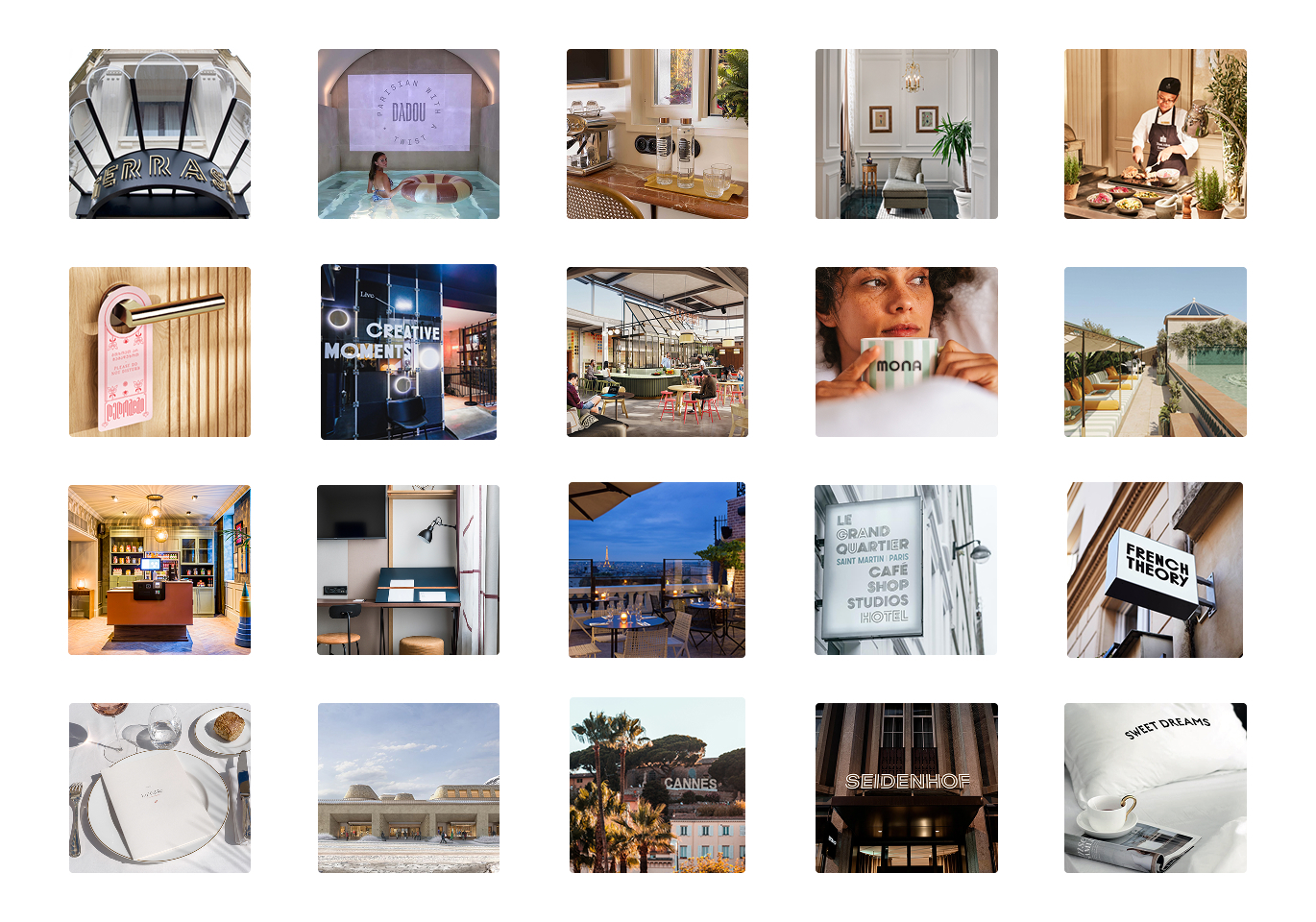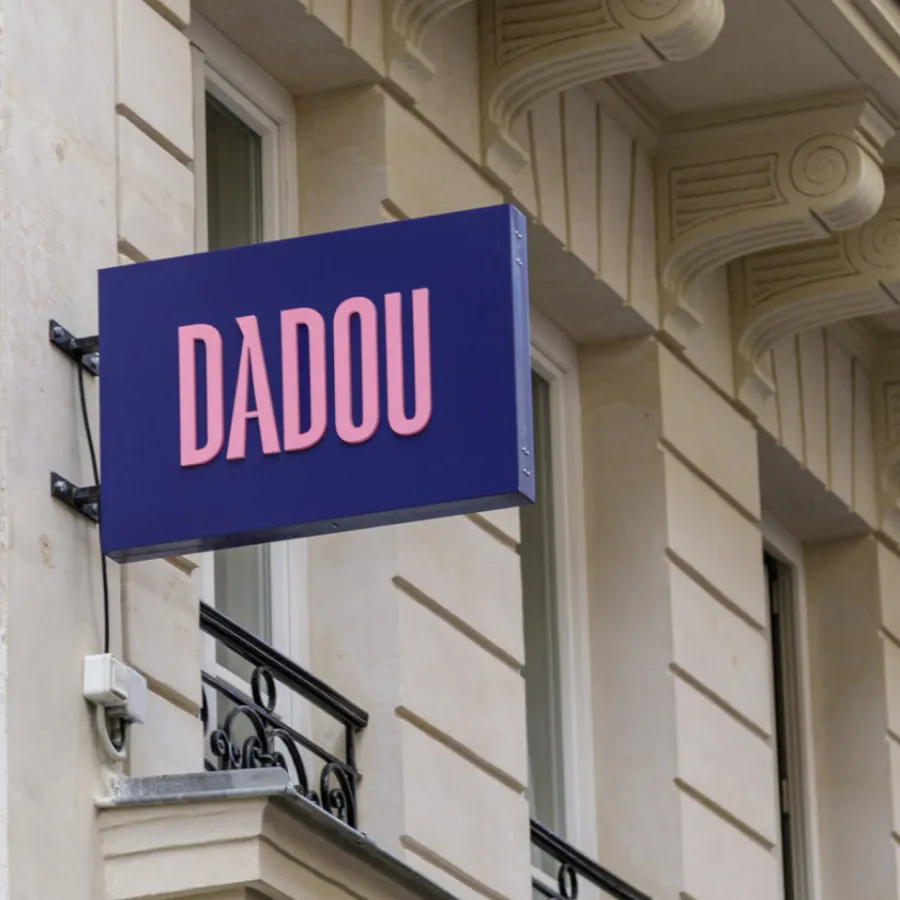The Subliminal Power of Brand Positioning: Virtuoso or Busker?
From Joshua Bell to San Pellegrino and Nespresso: why getting brand positioning right is key to building a successful brand strategy.

Free Concert
On 12 January 2007, 7:51am — A musician steps into Washington’s Enfant Plaza subway station dressed like any street performer, in a plain t-shirt and branded baseball cap. He finds a spot near a busy entrance to catch the rush hour crowd, pulls a violin from its case, leaves the case open for donations, and begins playing Bach’s Chaconne — a pinnacle of violin repertoire known for its complexity and emotional power. He continues with pieces by Massenet, Schubert, and Bach again. A few passersby stop briefly, but most hurry on without a glance.
After forty-five minutes, the violinist counts the donations: 32 US dollars. Respectable for a street performance. He packs up and leaves the station.

4 Days Earlier
On 8 January 2007, 8:35pm — Boston’s Symphony Hall is full. The audience has paid up to 100 US dollars for even folding seats. The audience and orchestra fall silent, awaiting the performer’s entrance. A thunderous applause greets him as he takes the stage. He greets the crowd, shares a nod with the conductor, and opens with the same Bach Chaconne, followed by Massenet, Schubert, and another Bach. Ninety minutes later, the captivated audience departs, grateful to have witnessed a performance by a prodigy named “Instrumentalist of the Year” and nominated for five Grammy Awards.
You’ve probably guessed — the two musicians are one and the same: Joshua Bell, one of the world’s foremost violinists. His subway performance was part of a Washington Post social experiment on “context, perception and priorities”. In both settings, Bell played the same pieces on a 3.5 million-dollar Stradivarius violin.
One musician. Two contexts. Two entirely different perceptions.

This experiment shows that people judge the value of things based on the context rather than true objectivity.
When Joshua Bell performed in the subway, he was perceived as a busker; in a concert hall, he was celebrated as a virtuoso. The appreciation of his talent shifted with the environment.
This same contextual mechanism is at play in all human activity — and brands are no exception. This insight is fundamental to the process of creating a brand, and more specifically to the process of brand positioning. Brand positioning defines the space a brand occupies in the minds of customers compared to competitors. It’s not just about what you offer, but the context you create around it.
Finding Your Place in Consumers’ Minds
To build a powerful brand, companies must carefully contextualise their offerings, particularly when their products or services do not drastically differ from competitors’. For example, San Pellegrino has become synonymous with Italian fine dining water; Contrex appeals to health-conscious consumers; VOSS targets a premium elite audience; and Perrier is the go-to choice for Parisian cafés and bars.
Strong brands evoke consistent associations among customers, shaping a mental image that justifies price premiums. For new brands or products, the biggest challenge is often in finding a positioning that differs from the competition but is still relevant and attractive to the target clientele.
Amazon, for instance, initially positioned itself as "the world’s largest bookstore" — a clever way to stand apart from physical bookstores and early e-commerce shops. While Amazon itself is not a traditional bookstore, this association helped to attract customers and to create instant credibility, while not limiting future growth.
.png)
From Positioning to Marketing Mix
In theory, a brand’s positioning should help drive decisions around product development, pricing, distribution, and communication — the marketing mix.
In practice, however, many brands lack clarity in their positioning, resulting in scattered or inconsistent marketing strategies. The effort to clarify positioning is well worth it: aligned brand positioning and marketing decisions create coherence and impact. Nespresso is a textbook example.
Coffee or Grand Cru?
When Nestlé launched Nespresso in 1986, it already owned Nescafé, a globally recognised brand since 1938. Despite this, Nestlé chose not to leverage Nescafé’s established name for their new coffee capsule system.
Why not use their notoriety to launch a new machine with Nescafé-branded capsules?
From a financial standpoint, using a well-known brand to launch a new product has the advantage of cutting marketing costs drastically. But from a brand perspective, the Nescafé name (despite its fame) would limit the potential for premium pricing to accompany the capsule innovation, given that Nescafé has long been positioned as a household brand offering easy-to-use products for everyone, everywhere.

Therefore, Nestlé created a new brand to warrant the high pricing of their capsules. Nespresso is positioned as a luxury brand, without truly being one, and has applied all the codes of the luxury sector. Every element of its marketing mix (product, price, distribution and communication) reinforces this premium positioning. The capsules bear elegant Italian names such as Volluto, Corto, Chiaro, and Vivalto Lungo, with some labelled as "Grands Crus".
Like luxury brands, Nespresso has created dedicated boutiques and invites customers to join an exclusive "club". To top it all off, the brand’s visibility is boosted by a combination of George Clooney and its chic paper packaging, which further elevates its brand image.
By contrast, Nescafé’s marketing is much more conventional and run-of-the-mill for coffee: instant coffee sold in supermarkets — what else?
Brand Positioning and Marketing Mix: A Two-Way Street
The connection between brand positioning and marketing mix is reciprocal. Marketing decisions influence brand positioning just as brand positioning guides marketing choices. For example, Nespresso would lose its premium appeal if sold at discount chains like Aldi, just as Nescafé would seem out of place in luxury shopping districts such as Geneva’s rue du Rhône.
Maintaining consistency between positioning and marketing mix is essential for a brand’s success.
How to Develop Effective Brand Positioning
Finding the right brand positioning requires time and thorough analysis. Before deciding, you must study the market, interpret trends, and anticipate competitors’ moves. This takes not only analytics but also creativity and strategy. The goal is not to invent “a catchy phrase”, but rather to develop a coherent framework that guides your brand.
The foundation of effective brand positioning is built on four key components:
- Target segment — Who are you trying to reach? (e.g. Montblanc targets senior executives seeking status.)
- Frame of reference — Which category do you want to own? (e.g. Mini is a “toy for adults”, Fiat 500 is a “fashion accessory”.)
- Benefits — What core advantages does your brand deliver?
- Proof points — What evidence supports your brand benefits? (e.g. BMW’s shock absorption and active steering engineering supports the brand benefit “sheer driving pleasure”.)

Testing Your Brand Positioning
A robust positioning statement should meet four criteria: differentiation, credibility, relevance, and attractiveness.
Test it by asking:
- Is my brand positioning different enough from my competitors?
- Is my positioning credible, or does it seem “far-fetched”?
- Is my brand positioning relevant to my resources, the industry, and upcoming trends?
- Is my brand positioning attractive to my target clientele — does it respond to their needs?
Once you have run the test, summarise your brand positioning into two or three concise sentences, known as a Brand Positioning Statement. The best brand positioning feels obvious once you get there — much like the flawless performance of a musician that took years of practice.
Is Your Brand Positioned for Success?
The right positioning is the foundation of every successful brand story. It can make or break your brand’s future.
At Creative Supply, we help businesses craft compelling brand positioning and turn it into powerful growth — through strategic branding, memorable customer experiences, and next-level digital design.
👉 Contact us to explore how we can help your brand stand out and create a lasting impression.
The Subliminal Power of Brand Positioning: Virtuoso or Busker?



The Subliminal Power of Brand Positioning: Virtuoso or Busker?
From Joshua Bell to San Pellegrino and Nespresso: why getting brand positioning right is key to building a successful brand strategy.
Free Concert
On 12 January 2007, 7:51am — A musician steps into Washington’s Enfant Plaza subway station dressed like any street performer, in a plain t-shirt and branded baseball cap. He finds a spot near a busy entrance to catch the rush hour crowd, pulls a violin from its case, leaves the case open for donations, and begins playing Bach’s Chaconne — a pinnacle of violin repertoire known for its complexity and emotional power. He continues with pieces by Massenet, Schubert, and Bach again. A few passersby stop briefly, but most hurry on without a glance.
After forty-five minutes, the violinist counts the donations: 32 US dollars. Respectable for a street performance. He packs up and leaves the station.

4 Days Earlier
On 8 January 2007, 8:35pm — Boston’s Symphony Hall is full. The audience has paid up to 100 US dollars for even folding seats. The audience and orchestra fall silent, awaiting the performer’s entrance. A thunderous applause greets him as he takes the stage. He greets the crowd, shares a nod with the conductor, and opens with the same Bach Chaconne, followed by Massenet, Schubert, and another Bach. Ninety minutes later, the captivated audience departs, grateful to have witnessed a performance by a prodigy named “Instrumentalist of the Year” and nominated for five Grammy Awards.
You’ve probably guessed — the two musicians are one and the same: Joshua Bell, one of the world’s foremost violinists. His subway performance was part of a Washington Post social experiment on “context, perception and priorities”. In both settings, Bell played the same pieces on a 3.5 million-dollar Stradivarius violin.
One musician. Two contexts. Two entirely different perceptions.

This experiment shows that people judge the value of things based on the context rather than true objectivity.
When Joshua Bell performed in the subway, he was perceived as a busker; in a concert hall, he was celebrated as a virtuoso. The appreciation of his talent shifted with the environment.
This same contextual mechanism is at play in all human activity — and brands are no exception. This insight is fundamental to the process of creating a brand, and more specifically to the process of brand positioning. Brand positioning defines the space a brand occupies in the minds of customers compared to competitors. It’s not just about what you offer, but the context you create around it.
Finding Your Place in Consumers’ Minds
To build a powerful brand, companies must carefully contextualise their offerings, particularly when their products or services do not drastically differ from competitors’. For example, San Pellegrino has become synonymous with Italian fine dining water; Contrex appeals to health-conscious consumers; VOSS targets a premium elite audience; and Perrier is the go-to choice for Parisian cafés and bars.
Strong brands evoke consistent associations among customers, shaping a mental image that justifies price premiums. For new brands or products, the biggest challenge is often in finding a positioning that differs from the competition but is still relevant and attractive to the target clientele.
Amazon, for instance, initially positioned itself as "the world’s largest bookstore" — a clever way to stand apart from physical bookstores and early e-commerce shops. While Amazon itself is not a traditional bookstore, this association helped to attract customers and to create instant credibility, while not limiting future growth.
.png)
From Positioning to Marketing Mix
In theory, a brand’s positioning should help drive decisions around product development, pricing, distribution, and communication — the marketing mix.
In practice, however, many brands lack clarity in their positioning, resulting in scattered or inconsistent marketing strategies. The effort to clarify positioning is well worth it: aligned brand positioning and marketing decisions create coherence and impact. Nespresso is a textbook example.
Coffee or Grand Cru?
When Nestlé launched Nespresso in 1986, it already owned Nescafé, a globally recognised brand since 1938. Despite this, Nestlé chose not to leverage Nescafé’s established name for their new coffee capsule system.
Why not use their notoriety to launch a new machine with Nescafé-branded capsules?
From a financial standpoint, using a well-known brand to launch a new product has the advantage of cutting marketing costs drastically. But from a brand perspective, the Nescafé name (despite its fame) would limit the potential for premium pricing to accompany the capsule innovation, given that Nescafé has long been positioned as a household brand offering easy-to-use products for everyone, everywhere.

Therefore, Nestlé created a new brand to warrant the high pricing of their capsules. Nespresso is positioned as a luxury brand, without truly being one, and has applied all the codes of the luxury sector. Every element of its marketing mix (product, price, distribution and communication) reinforces this premium positioning. The capsules bear elegant Italian names such as Volluto, Corto, Chiaro, and Vivalto Lungo, with some labelled as "Grands Crus".
Like luxury brands, Nespresso has created dedicated boutiques and invites customers to join an exclusive "club". To top it all off, the brand’s visibility is boosted by a combination of George Clooney and its chic paper packaging, which further elevates its brand image.
By contrast, Nescafé’s marketing is much more conventional and run-of-the-mill for coffee: instant coffee sold in supermarkets — what else?
Brand Positioning and Marketing Mix: A Two-Way Street
The connection between brand positioning and marketing mix is reciprocal. Marketing decisions influence brand positioning just as brand positioning guides marketing choices. For example, Nespresso would lose its premium appeal if sold at discount chains like Aldi, just as Nescafé would seem out of place in luxury shopping districts such as Geneva’s rue du Rhône.
Maintaining consistency between positioning and marketing mix is essential for a brand’s success.
How to Develop Effective Brand Positioning
Finding the right brand positioning requires time and thorough analysis. Before deciding, you must study the market, interpret trends, and anticipate competitors’ moves. This takes not only analytics but also creativity and strategy. The goal is not to invent “a catchy phrase”, but rather to develop a coherent framework that guides your brand.
The foundation of effective brand positioning is built on four key components:
- Target segment — Who are you trying to reach? (e.g. Montblanc targets senior executives seeking status.)
- Frame of reference — Which category do you want to own? (e.g. Mini is a “toy for adults”, Fiat 500 is a “fashion accessory”.)
- Benefits — What core advantages does your brand deliver?
- Proof points — What evidence supports your brand benefits? (e.g. BMW’s shock absorption and active steering engineering supports the brand benefit “sheer driving pleasure”.)

Testing Your Brand Positioning
A robust positioning statement should meet four criteria: differentiation, credibility, relevance, and attractiveness.
Test it by asking:
- Is my brand positioning different enough from my competitors?
- Is my positioning credible, or does it seem “far-fetched”?
- Is my brand positioning relevant to my resources, the industry, and upcoming trends?
- Is my brand positioning attractive to my target clientele — does it respond to their needs?
Once you have run the test, summarise your brand positioning into two or three concise sentences, known as a Brand Positioning Statement. The best brand positioning feels obvious once you get there — much like the flawless performance of a musician that took years of practice.
Is Your Brand Positioned for Success?
The right positioning is the foundation of every successful brand story. It can make or break your brand’s future.
At Creative Supply, we help businesses craft compelling brand positioning and turn it into powerful growth — through strategic branding, memorable customer experiences, and next-level digital design.
👉 Contact us to explore how we can help your brand stand out and create a lasting impression.
DownloadThe Subliminal Power of Brand Positioning: Virtuoso or Busker?
Download
Free Concert
On 12 January 2007, 7:51am — A musician steps into Washington’s Enfant Plaza subway station dressed like any street performer, in a plain t-shirt and branded baseball cap. He finds a spot near a busy entrance to catch the rush hour crowd, pulls a violin from its case, leaves the case open for donations, and begins playing Bach’s Chaconne — a pinnacle of violin repertoire known for its complexity and emotional power. He continues with pieces by Massenet, Schubert, and Bach again. A few passersby stop briefly, but most hurry on without a glance.
After forty-five minutes, the violinist counts the donations: 32 US dollars. Respectable for a street performance. He packs up and leaves the station.

4 Days Earlier
On 8 January 2007, 8:35pm — Boston’s Symphony Hall is full. The audience has paid up to 100 US dollars for even folding seats. The audience and orchestra fall silent, awaiting the performer’s entrance. A thunderous applause greets him as he takes the stage. He greets the crowd, shares a nod with the conductor, and opens with the same Bach Chaconne, followed by Massenet, Schubert, and another Bach. Ninety minutes later, the captivated audience departs, grateful to have witnessed a performance by a prodigy named “Instrumentalist of the Year” and nominated for five Grammy Awards.
You’ve probably guessed — the two musicians are one and the same: Joshua Bell, one of the world’s foremost violinists. His subway performance was part of a Washington Post social experiment on “context, perception and priorities”. In both settings, Bell played the same pieces on a 3.5 million-dollar Stradivarius violin.
One musician. Two contexts. Two entirely different perceptions.

This experiment shows that people judge the value of things based on the context rather than true objectivity.
When Joshua Bell performed in the subway, he was perceived as a busker; in a concert hall, he was celebrated as a virtuoso. The appreciation of his talent shifted with the environment.
This same contextual mechanism is at play in all human activity — and brands are no exception. This insight is fundamental to the process of creating a brand, and more specifically to the process of brand positioning. Brand positioning defines the space a brand occupies in the minds of customers compared to competitors. It’s not just about what you offer, but the context you create around it.
Finding Your Place in Consumers’ Minds
To build a powerful brand, companies must carefully contextualise their offerings, particularly when their products or services do not drastically differ from competitors’. For example, San Pellegrino has become synonymous with Italian fine dining water; Contrex appeals to health-conscious consumers; VOSS targets a premium elite audience; and Perrier is the go-to choice for Parisian cafés and bars.
Strong brands evoke consistent associations among customers, shaping a mental image that justifies price premiums. For new brands or products, the biggest challenge is often in finding a positioning that differs from the competition but is still relevant and attractive to the target clientele.
Amazon, for instance, initially positioned itself as "the world’s largest bookstore" — a clever way to stand apart from physical bookstores and early e-commerce shops. While Amazon itself is not a traditional bookstore, this association helped to attract customers and to create instant credibility, while not limiting future growth.
.png)
From Positioning to Marketing Mix
In theory, a brand’s positioning should help drive decisions around product development, pricing, distribution, and communication — the marketing mix.
In practice, however, many brands lack clarity in their positioning, resulting in scattered or inconsistent marketing strategies. The effort to clarify positioning is well worth it: aligned brand positioning and marketing decisions create coherence and impact. Nespresso is a textbook example.
Coffee or Grand Cru?
When Nestlé launched Nespresso in 1986, it already owned Nescafé, a globally recognised brand since 1938. Despite this, Nestlé chose not to leverage Nescafé’s established name for their new coffee capsule system.
Why not use their notoriety to launch a new machine with Nescafé-branded capsules?
From a financial standpoint, using a well-known brand to launch a new product has the advantage of cutting marketing costs drastically. But from a brand perspective, the Nescafé name (despite its fame) would limit the potential for premium pricing to accompany the capsule innovation, given that Nescafé has long been positioned as a household brand offering easy-to-use products for everyone, everywhere.

Therefore, Nestlé created a new brand to warrant the high pricing of their capsules. Nespresso is positioned as a luxury brand, without truly being one, and has applied all the codes of the luxury sector. Every element of its marketing mix (product, price, distribution and communication) reinforces this premium positioning. The capsules bear elegant Italian names such as Volluto, Corto, Chiaro, and Vivalto Lungo, with some labelled as "Grands Crus".
Like luxury brands, Nespresso has created dedicated boutiques and invites customers to join an exclusive "club". To top it all off, the brand’s visibility is boosted by a combination of George Clooney and its chic paper packaging, which further elevates its brand image.
By contrast, Nescafé’s marketing is much more conventional and run-of-the-mill for coffee: instant coffee sold in supermarkets — what else?
Brand Positioning and Marketing Mix: A Two-Way Street
The connection between brand positioning and marketing mix is reciprocal. Marketing decisions influence brand positioning just as brand positioning guides marketing choices. For example, Nespresso would lose its premium appeal if sold at discount chains like Aldi, just as Nescafé would seem out of place in luxury shopping districts such as Geneva’s rue du Rhône.
Maintaining consistency between positioning and marketing mix is essential for a brand’s success.
How to Develop Effective Brand Positioning
Finding the right brand positioning requires time and thorough analysis. Before deciding, you must study the market, interpret trends, and anticipate competitors’ moves. This takes not only analytics but also creativity and strategy. The goal is not to invent “a catchy phrase”, but rather to develop a coherent framework that guides your brand.
The foundation of effective brand positioning is built on four key components:
- Target segment — Who are you trying to reach? (e.g. Montblanc targets senior executives seeking status.)
- Frame of reference — Which category do you want to own? (e.g. Mini is a “toy for adults”, Fiat 500 is a “fashion accessory”.)
- Benefits — What core advantages does your brand deliver?
- Proof points — What evidence supports your brand benefits? (e.g. BMW’s shock absorption and active steering engineering supports the brand benefit “sheer driving pleasure”.)

Testing Your Brand Positioning
A robust positioning statement should meet four criteria: differentiation, credibility, relevance, and attractiveness.
Test it by asking:
- Is my brand positioning different enough from my competitors?
- Is my positioning credible, or does it seem “far-fetched”?
- Is my brand positioning relevant to my resources, the industry, and upcoming trends?
- Is my brand positioning attractive to my target clientele — does it respond to their needs?
Once you have run the test, summarise your brand positioning into two or three concise sentences, known as a Brand Positioning Statement. The best brand positioning feels obvious once you get there — much like the flawless performance of a musician that took years of practice.
Is Your Brand Positioned for Success?
The right positioning is the foundation of every successful brand story. It can make or break your brand’s future.
At Creative Supply, we help businesses craft compelling brand positioning and turn it into powerful growth — through strategic branding, memorable customer experiences, and next-level digital design.
👉 Contact us to explore how we can help your brand stand out and create a lasting impression.










